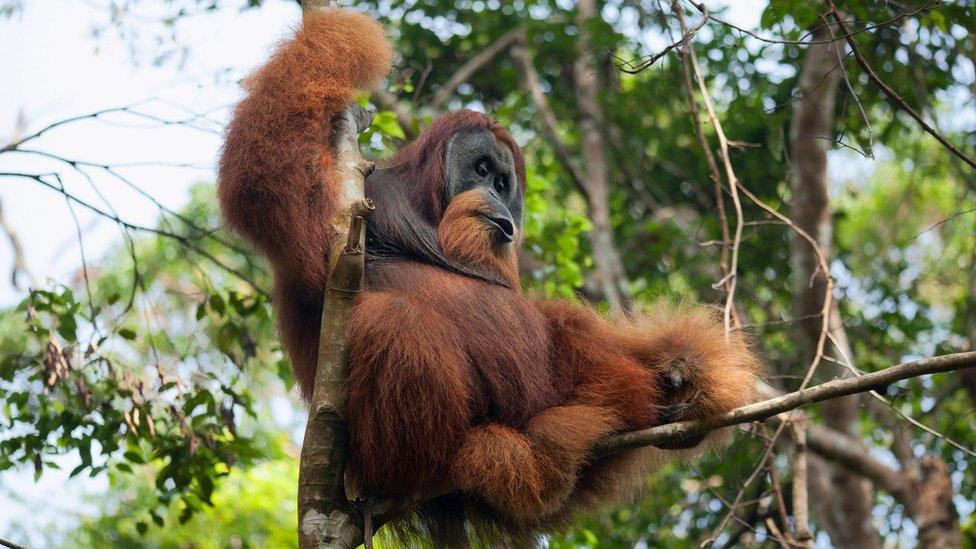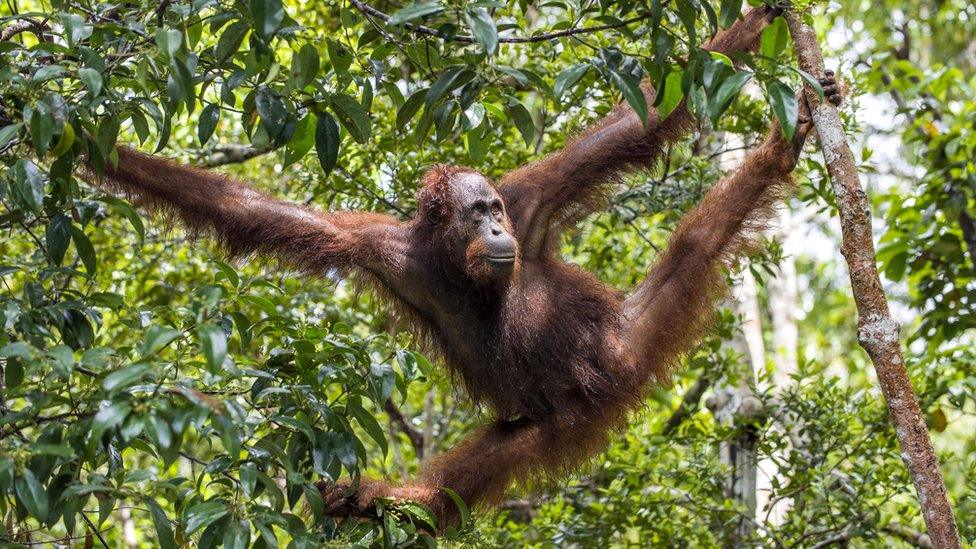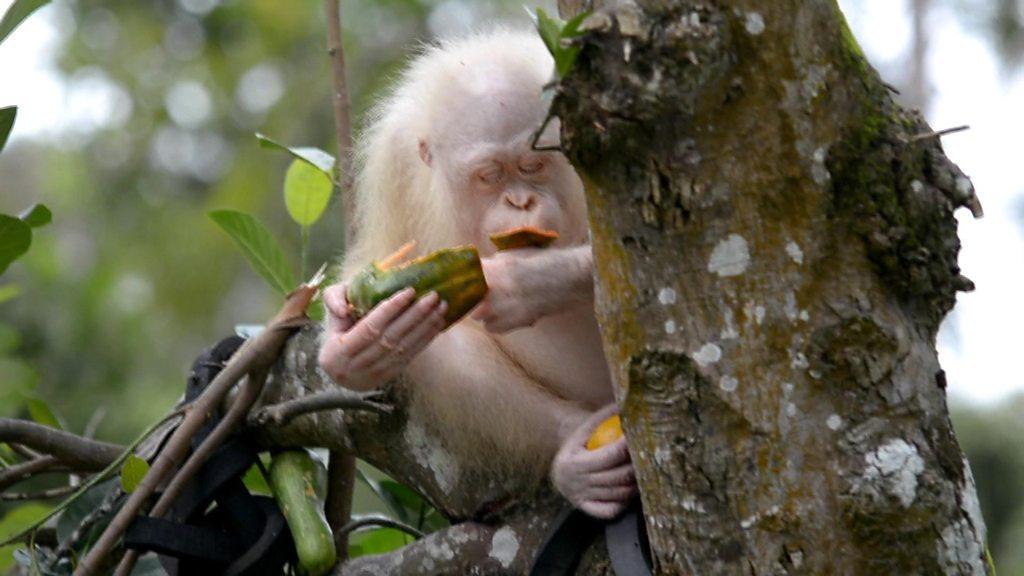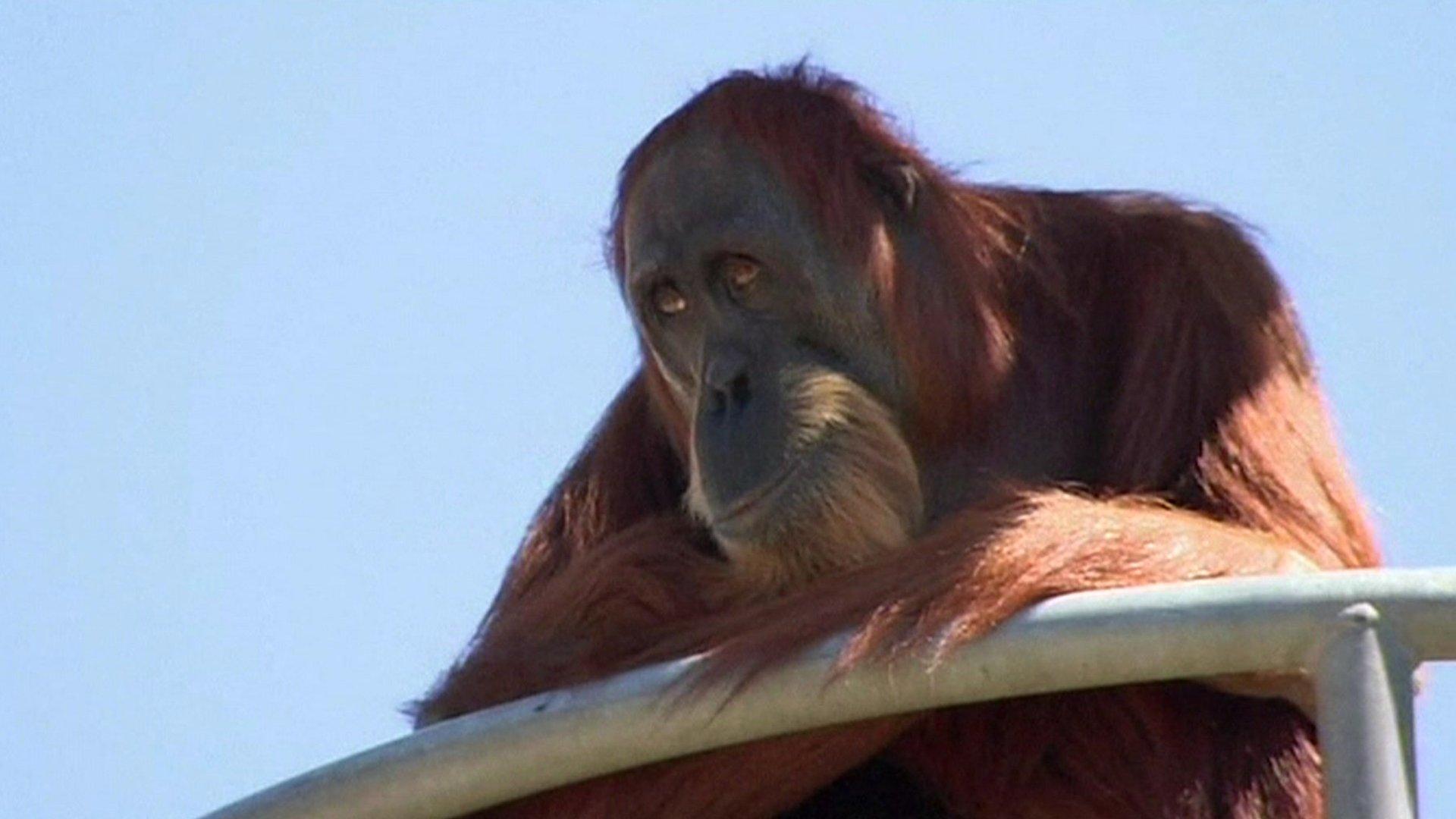Scientists discover BRAND NEW species of ape
- Published
In the world of science, something incredibly exciting has just happened.
Scientists from Liverpool John Moores University and the University of Zurich have announced they've discovered a brand new species of orangutan - the Tapanuli orangutan.

A male orangutan rests on a tree in the jungle of Sumatra
It is the first newly described great ape for almost 100 years, which is a pretty big deal.
Until today, there have only been six recognised species of great ape aside from humans - Sumatran and Bornean orangutans, eastern and western gorillas, chimpanzees, and bonobos.
The scientists were able to identify this new orangutan species - which also lives in Sumatra - by examining the sound it makes and also by looking at its genes.
"Great apes are among the best-studied species in the world," says Erik Meijaard of the Australian National University.
"If after 200 years of serious biological research we can still find new species in this group, what does it tell us about all the other stuff that we are overlooking?"
According to the report published in Current Biology, there are only 800 of these apes left, so this means the species goes straight onto the Critically Endangered list.
It also means that there are 800 fewer Sumatran orangutans than previously thought.
So what else do we know about orangutans already?


A Bornean orangutan swings through the trees
Orangutans - whose name means 'people of the forest' - are Asia's only great apes.
Until today, we only knew about two kinds - one species found on the island of Borneo and the other on Sumatra.

The scientific name for orangutans is pongo.
They are the world's largest tree-living animals! They sleep in nests, which they build in the trees out of branches and leaves.

Despite their large appearance, they actually have quite small, weak legs. All of their strength and power comes from their muscular arms, which can be two metres wide.

You can tell the males and females apart because males are bigger and have special throat pouch and cheek pads.

They are really intelligent creatures. They are able to teach themselves to use tools like sticks to dig out termites from tricky places so they can eat them.

A male orangutan rests on a tree in the jungle of Sumatra

They're really important to forests as they eats loads of fruits, so they're important for dispersing seeds through their poo.

Bornean orangutans can only have a baby once every eight years, which is one of the reasons that population numbers are so low.
- Published22 September 2017

- Published6 April 2017

- Published27 October 2016

